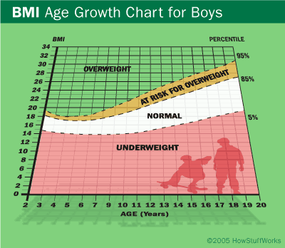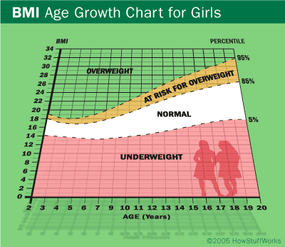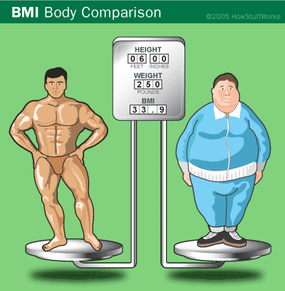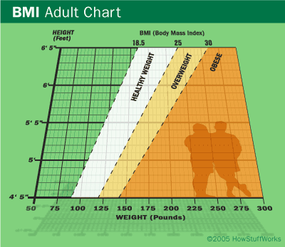Body Mass Index is a calculation that takes into consideration both a person's body weight and height to determine whether they are underweight, overweight, or at a healthy weight. It can be calculated in inches and pounds (in the United States), or meters and kilograms (in countries that use the metric system).
In inches, the formula looks like this:
(weight in pounds) / (height in inches)2 * 703
A person who weighs 180 pounds and is 5 feet 8 inches tall has a BMI of 27.4.
180 lbs/(68 inches)2 * 703 = 27.4
In meters, the formula looks like this:
(weight in kilograms) / (height in meters)2
A person who weighs 99.79 kilograms and is 1.905 meters (190.50 centimeters) tall has a BMI of 27.5.
99.79 Kg/(1.905 m)2 = 27.5
What's your BMI? Type your height and weight into the boxes and press "Find My BMI."
Studies have indicated that being overweight or obese can significantly increase a person's risk for developing several diseases, including:
Similarly, being underweight can also lead to increased health risks due to malnutrition.
In a broad sense, the BMI helps health officials get a general idea of how weight and obesity affect the health of the population. On an individual basis, it enables doctors to identify weight problems in their patients before serious health conditions arise. Patients who are overweight, or at risk for being overweight, can start on a diet and exercise program to help them bring their weight down to a healthy range.
It's important to note that BMI is just one factor involved in determining risk for disease. Diet choices, exercise, and smoking all combine to determine whether or not an individual is healthy.
In the next section we'll see how BMI is measured for children.
For more common questions and expert answers on fitness and exercise, visit Sharecare.com.





